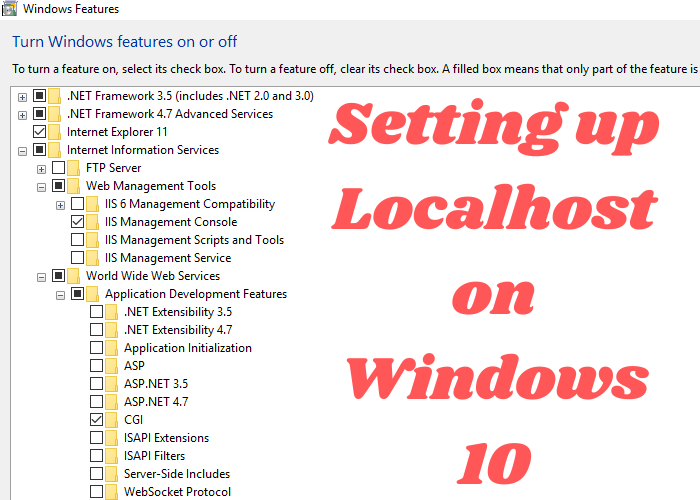If you’re a web developer, you know the importance of being able to test your work on localhost. In this post, we’ll show you how to set up localhost on Windows 10. We’ll also cover some of the most common problems that developers encounter when setting up localhost. So if you’re having trouble getting localhost to work, stay tuned! We’ll help you get it up and running in no time.
what is localhost and why would you want to use it
When you enter “localhost” into your web browser, you’re accessing a web server that is running on your own computer. This can be useful for testing websites and web applications before making them public. For example, you can use localhost to test a new website or web application to make sure it works as expected before publishing it to the internet. Additionally, using localhost can help improve the performance of your website or web application since it eliminates the need to send requests to a remote server. Of course, localhost is only accessible from your own computer, so it’s not suitable for public websites or applications. However, for private testing and development, localhost can be a valuable tool.
setting up a new site on localhost
Localhost is a special server that always points to your computer. Localhost is the standard hostname for your computer’s loopback interface, which means it points back to your computer. Localhost is used mostly in development environments, such as when you’re working on a website locally on your computer. Localhost always points to your computer, so if you type in localhost in your web browser, it will always bring you to the website you’re developing on your own computer.
There are a few different ways to set up Localhost on Windows 10. The first way is to use the Microsoft Web Platform Installer (Web PI). The second way is to use the XAMPP app. And the third way is to manually install Localhost on Windows 10.
If you want tousle Localhost for website development, then you need to set up a server software such as Apache, Nginx, or IIS on your computer. Localhost will then point to that server software, and you can develop websites with it. If you just want to use Localhost for testing purposes, then you don’t need to set up a server software. You can just use Localhost as a way to test things on your computer.
working with files and folders on your computer
Localhost is the standard hostname for the local machine, as specified in the hosts file. The Localhost IP address is 127.0.0.1. If you need to connect to your computer from another device on your local network, you can use the Localhost address. You can also use Localhost to access web pages that are stored on your computer. If you are working on a website, you can use Localhost to test the site before making it available to the public. To do this, you need to set up a Localhost server. There are many ways to do this, but one easy way is to use XAMPP. XAMPP is a free and open source cross-platform web server solution stack package developed by Apache Friends, consisting mainly of the Apache HTTP Server, MariaDB database, and interpreters for scripts written in the PHP and Perl programming languages. Once you have XAMPP installed, you can start the Apache server and create a Localhost server. Then, you can access your Localhost server from any device on your local network. This is a great way to test websites or web applications before making them available to the public.
using phpmyadmin to manage your databases
Localhost is the standard hostname for the local computer that is running the Apache server. By default, localhost will be configured to use port 80. To access phpMyAdmin, you need to go to http://localhost/ in a web browser. On Windows 10, Localhost can be accessed by going to Start > Run and type “cmd” (without the quotes). Then, type “ipconfig” at the command prompt and press Enter. This will display your Local IP address. You can then use this Local IP address to access phpMyAdmin in a web browser. For example, if your Local IP address is 192.168.1.100, then you would go to http://192.168.1.100/ in a web browser to access phpMyAdmin. Once you have logged in, you will be able to manage your databases using the various features of phpMyAdmin.
some common problems and how to solve them
Localhost is a name that is used to refer to the local computer address. It’s also known as the loopback address because it points back to the local machine. Localhost is Global but shouldn’t be confused with your Local Hosts File. Localhost always points to 127.0.0.1 and is reachable by anyone on your Local Area Network (LAN). If you are using XAMPP, Localhost refers to your XAMPP installation folder. The XAMPP control panel uses Localhost to access the Apache server, MySQL database, and any other tools that are installed in the XAMPP folder.
If you can’t access Localhost, it might be because:
- You don’t have a Local Area Connection
- The domain name isn’t resolving to 127.0.0.1
- Your firewall is blocking access to port 80
- IIS is using port 80
- Skype is using port 80
- You have a virus or malware infection
Here are some steps you can take to fix the problem:
- Make sure you have a Local Area Connection by checking the Ethernet cable or WiFi connection.
- Check your hosts file

